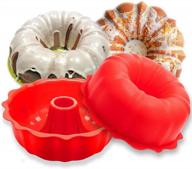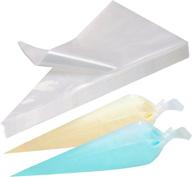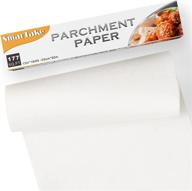
Review on Buon Vino Mini Jet Filter by Cristabel Logan

Impressive good just understand how to use it
I haven't written much here but I was close to buying it and ended up playing and wanted to leave a review for others like me I filtered two 5 gallon meads with this thing and what an amazing before and after difference. I have to say up front: These Mets had a hard life. I've run them in less than ideal conditions and have had a couple of AC outages this year which have caused them to overheat. They had a very bad taste and looked like sea water after 7 months (sediment stopped forming after every two pumpings). I figured they were either spoiled or would take a few years to possibly age to the point of enjoyment. Enter Buon Vino. I took the chance and decided to see if filtering would help. I have experience with submicron filtration stages through my work as a chemist, so I didn't want to completely close my eyes to what these filters can do. man whats the difference. Where once there was seawater I could read in large print after the mead. And more importantly, the off-flavors are almost completely gone. I won't say they're winners, but if you sweeten them a little, they make great honey. And now I will give some tips for use, which, in my opinion, are the source of many negative reviews. Soak the pads. as the instructions say. This allows a tight seal to form and if you try to use the pads dry they will squirt like you're hitting an artery. Run 5 gallons of clean water (I would recommend a small amount of a food grade sanitizer like Starsan beforehand) through the pump to rinse the seals well and AFTER TIGHTENING, RETIGHTEN THE SEALS. The additional pressure and the water displace the last air and ensure a perfect fit of the pads. If you did everything right, the drip tray will end up almost empty. Finally, and most importantly, understand what type of filter you are using. Filters naturally clog with the crap they are trying to remove. If you use a filter with a small pore size and you pass liquid with a lot of dirt through it, the filter will clog very, very quickly. and your machine will start spraying liquid again. DO NOT attempt to filter liquid that has not yet been squeezed out (you can squeeze it out if you buy a strainer for it and bypass the filter with a hose, but it's no better than a dripping stick). If you've tried filtration before and want to try filtration, I would use filter #1 (rough) and be prepared to turn off the pump if you see the filters becoming clogged (they will drip excessively before splashing ). ). If you strained twice (or already coarsely filtered) I would run the liquid through a #2 polishing filter. This will make the liquid visibly clear, perhaps to the point where it can be read clearly. Filter #3 seems like overkill unless you suspect you're fermenting an enzyme and want to try and salvage it. I would be much more concerned about flavor loss with filter #3 than with filter #2, so personally I wouldn't make this a standard practice. The bad reviews I've read about this product are almost textbook. probably mostly not with the right filter. If you try to filter wine/mead with this thing with a #2 filter, be prepared for possible liquid splatter stuck pig syndrome. There's a good chance you'll clog the filters, which is a mess. But if you follow the instructions in the guide and use the tips above, you'll have an easier time.
- Practical thing
- So far so good
New products
Comments (0)
Top products in 🍶 Home Brewing & Wine Making Supplies

Razorri Comodo Ceramic Fermentation Crock - 2L Traditional Water-Sealed Jar With Glazed Weights - Perfect For Kombucha, Sauerkraut, Kimchi, Pickles (Tangerine Tango)

23 Review

Nitro-Style Draft Beer Dispenser - FIZZICS DraftPour, Perfect Gift For Homebrewers & Craft Beer Enthusiasts!

37 Review

Giftgarden Woodgrain Picture Ledge Shelf Set - 24 Inch Black Floating Shelves for Storage in Home and Office, Set of 3 Different Sizes

27 Review

24-Inch Musical Christmas Tree With Charlie Brown & Linus Blanket - ProductWorks

37 Review
Another interesting products

2-Pack European Grade Silicone Bunte Cake Pan Set - Non Stick Bakeware Fluted Tube Mold For Jello, Gelatin & Cakes | 9 Inch Baking Pans | Aokinle | BPA Free

38 Review

100-Pack Of Disposable 18-Inch Piping Bags For Cake, Cupcake, And Cookie Decorating - Perfect For Icing And Frosting!

41 Review

PME Scriber Needle Modelling Tool, For Cake Decorating, 5.7-Inch

38 Review

SMARTAKE Non-Stick Parchment Paper Roll, 13 In X 164 Ft (177 Sq. Ft) For Baking, Cooking, Air Fryer, Steamer, Kitchen, Cookies, Bread, And More - White Baking Pan Liner

41 Review

